|
|
Post by stevil on Feb 24, 2009 15:23:28 GMT -5
I’ve seen a couple of references to Lomatiums here and would be keen to learn more of the experience of others. There are about 80 species in North America and I’ve tried some 10 species so far including the following: Lomatium columbianum Lomatium dissectum Lomatium grayii Lomatium macrocarpum Lomatium martindalei Lomatium nevadense Lomatium nudicaule Lomatium triternatum Lomatium utriculatum (several more sowed this winter) L. nudicaule (Barestem Biscuitroot), L. utriculatum (Common Lomatium) and L. triternatum (Nineleaf Biscuitroot) have all survived several winters (although I guess our wet summers may be more of a challenge). I’ve definiteiy lost a few of them too. Not having more than a couple of plants of each, I haven’t done more than nibble on the leaves, but now they are self-seeding so there should be more plants to try eventually. Here are a few pictures from my garden. First Lomatium nudicaule – this one seems most happy: 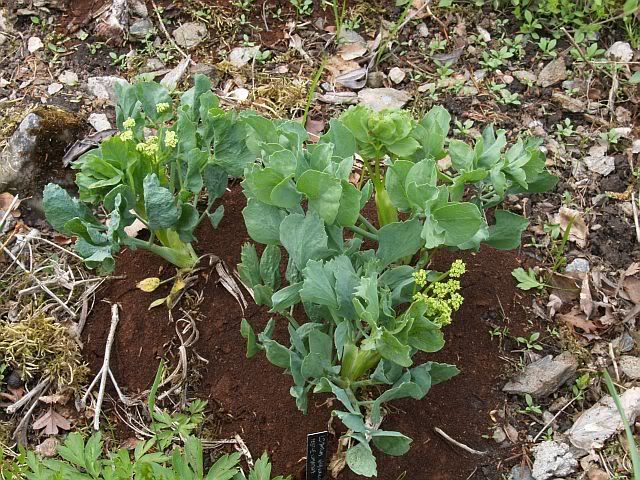 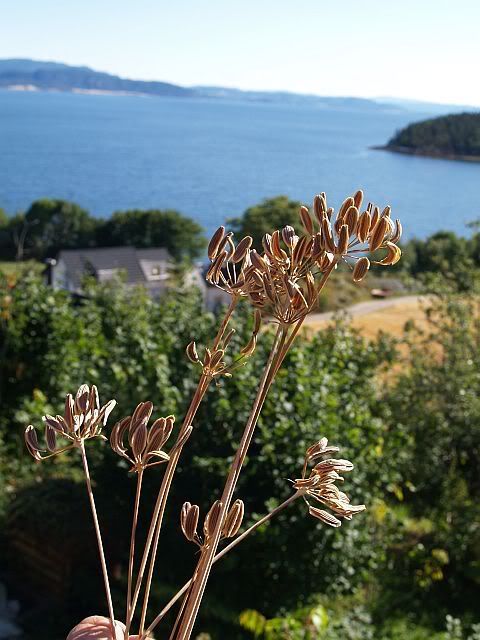 Then L. utriculatum: 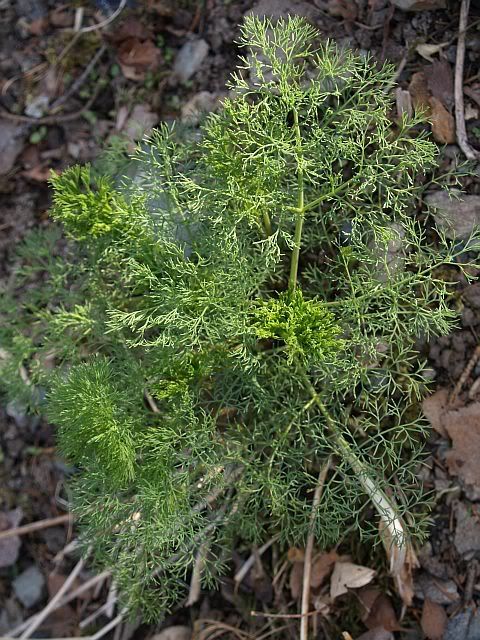 Is this one also utriculatum? (here together with Viola lutea):  And finally one of triternatum: 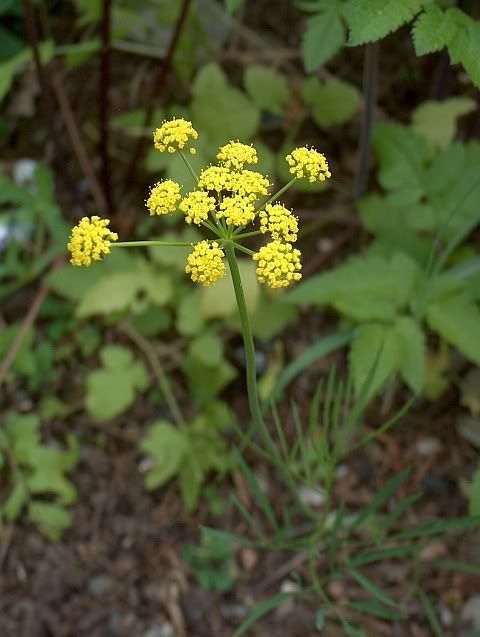 |
|
|
|
Post by utopiate on Feb 24, 2009 16:12:12 GMT -5
They look like they are growing nicely all right, and in a scenic location too. The drier conditions here produce a much rangier and somewhat sparse form of L. naudicale, but its fairly common close by. Here is an interesting report from the late 1800s on several lomatiums from my region and the Spokane Indian use and appraisal of their ediblity. www.swsbm.com/AJP/AJP_1889_No_11.pdfScroll down to the third plant article. Quite a few native Lomatiums in my area. So much so, the region might even be considered a center of distribution. I should be able to report on more of them in their native habitat later, or access plenty of seeds from various species too. Many make fair parsley garnish material, but use as the "biscuit roots" was their main value to early tribes, with medicinal use also. L. dissectum grows quite large here, but has very foul tasting and aeromatic roots. It's being promoted more than a little as a medicinal here, even being sold online, somewhat dubiously in my estimation. It's known to cause severe skin rashes and reactions. Not exactly one of the good edible types. Some of the others do have quite nice tasting roots, but the trouble seems to be that it takes several years, maybe even four, to typically obtain a usable sized root. Quite a range of sizes and forms. Most are edible, with somewhat parsley tasting roots. The botanist Charles Geyer left some early descriptions of native preparation of biscuit roots. Indeed he named at least one species (Lomatium farinosum), and has another named after him directly (Lomatium geyeri). His account written of crossing the Oregon Trail in 1843(?) contains some picturesque descriptions of these plants and the Native people using them. Lewis and Clark also traded for and wrote of them. Unfortunately, having subsisted almost entirely on game meat in crossing the continent, when they entered the Pacific drainages and began trading for dried fish and roots, which formed the basis of the diet here, the men were quickly incapacitated and left groaning in agony, holding their stomachs, and lying by the trails, unable to adapt to the change in digestion required. It also may have been the inulin in the Camas wreaking havok with their intestines (think jerusalum artichoke here). It's doubtful that the men of the expedition took the time to cook them in underground ovens for three days in Native tradition, as they should have. They faired better trading for wapato and living on elk in the lower Columbia, but reverted to trading for dogmeat in preference to fish and roots on their return to the Nez Perce country. Havn't really tried growing them but may do so. They grow themselves well around here, and do like aridity in mid-summer. I believe Alkapuler is experimentally growing some species now also. |
|
|
|
Post by ottawagardener on Feb 24, 2009 18:24:03 GMT -5
This is interesting. I think I have only come across one mention of this. When I googled it, all I got was promotion of its 'health' benefits. Presumedly the one you mentioned utopiate.
|
|
|
|
Post by utopiate on Feb 24, 2009 20:37:00 GMT -5
Some Lomatium links found. The first one has a fair picture of some mature Lomatium cous roots such as were used peeled, dried, and pounded into the biscuit root dough. The noisy pounding of the dried roots was a common percussional feature of the Indian villages of the mid-Columbia region. The resulting flour was mixed with water, formed into a sometimes very large biscuit of dough, and then baked over the coals or near the fire's heat into the resultant biscuits. These biscuits were often three feet long, and with a hole in their center so they could be hung on the saddle when traveling. Pieces of the hard, bland, but long lasting biscuit were broken off as needed and cooked up as a staple carbohydrate mush, or added to soups and stews. www.lewis-clark.org/content/content-article.asp?ArticleID=2723This link is a lengthier pdf download of an ethnographic nature on mid-Columbian tribal use of Lomatiums, their food energy, nutrition, growth densities, percent of diet, etc. www.vetmed.wsu.edu/org_nws/NWSci%20journal%20articles/1981%20files/Issue%202/v55%20p87%20Hunn%20and%20French.PDFLomatium canby and Lomatium cous seem to have been preferred species from what I can find, but many other species were used in a similar manner. |
|
|
|
Post by ottawagardener on Feb 24, 2009 21:04:42 GMT -5
Thank you. I'll read those links. I'm glad to learn the history of these lost / forgotten / currently marginal foods along with usual facts.
|
|
|
|
Post by stevil on Feb 25, 2009 12:09:42 GMT -5
Excellent, Steve! I knew I could rely on you... I've read about the Native American use of Lomatiums in the book Native American Ethnobotany (NAE). However, it's good though to read these more detailed accounts and first hand accounts by you guys. As I've said before, most of the plants in my garden have an interesting story to tell, now I've got a few more... I also noted Al Kapuler's reference to Lomatiums, so I was hoping he might tell us of his experiences so far... It took about 3-4 years for my plants to flower from seed, so I had really thought of them mainly as useful as a kind of perennial parsley rather than a root crop. I’ve read in NAE that the stalks of L. nudicaule were used like celery. Another example of "perennial parsley" is Mitsuba (Cryptotaenia japonica. Of course, the flavour of these "perennial parsleys" are distinct and not really like parsley at all, but can be used in similar ways for unique food experiences... Self-sown Cryptotaenia japonica atropurpurea in my garden: 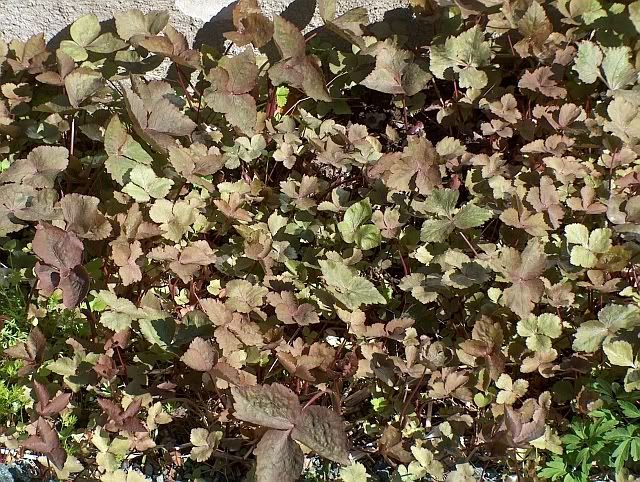 |
|
|
|
Post by utopiate on Feb 25, 2009 12:38:22 GMT -5
Looks like its thriving. Never heard of that genus. One of the most edible but petite forms of lomatium common around my place is Lomatium gormanii. The tubers aren't very large, a few centimeters diameter... but often several are strung out together on the same root. They prefer seasonally dry rocky soils, making them rather hard to dig. If the digging was easy, gophers would probably eat every one. The larger biscuit roots range somewhat east of me, so this is the one I have sampled the most. Quite nice as a trail tidbit. Let me know if you are interested in this one. Found a site with some photos, including one showing a tuber. www.botany.hawaii.edu/FACULTY/CARR/ofp/lom_gor.htm |
|
|
|
Post by stevil on Feb 25, 2009 14:37:52 GMT -5
Silly question! Of course I'm interested.  I'm interested in all of them! I find the shear diversity in this genus fascinating! Fantastic pictures! |
|
|
|
Post by stevil on Feb 25, 2009 14:52:58 GMT -5
You also have a Mitsuba relation growing wild and apparently quite common on the East coast of North America - Honewort or Cryptotaenia canadensis - perennial and can also be used in a similar way. Here it is: 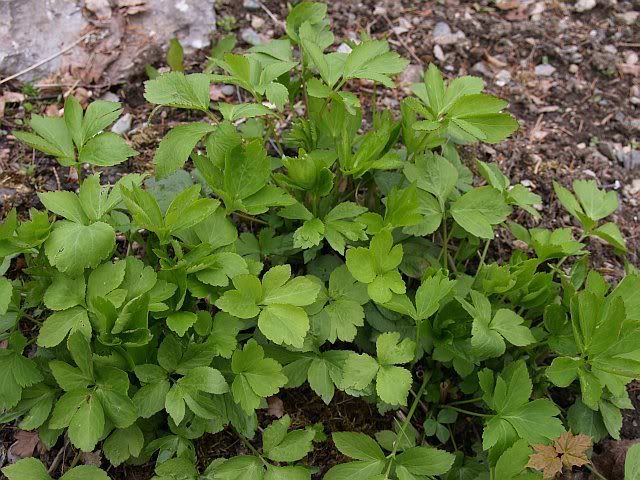 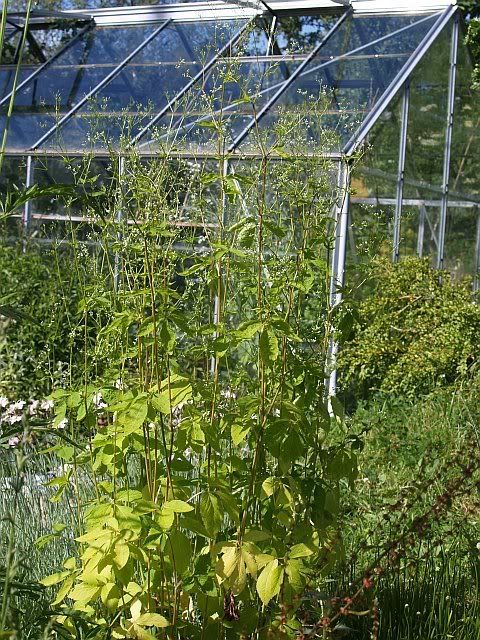 |
|
|
|
Post by ottawagardener on Feb 25, 2009 15:48:18 GMT -5
I am growing two types of Mitsuba this year. Is your autopurpurea growing in half sun? I am going to try it in a shady part of the yard. It sounds like another ideal plant: perennial and self seeding. I have heard some say that it gets a little weedy but that shouldn't be a problem if I like to eat it, such as garlic chives.
|
|
|
|
Post by stevil on Feb 26, 2009 1:56:18 GMT -5
Yes, it's growing in half sun...
|
|
|
|
Post by ottawagardener on Feb 26, 2009 7:17:40 GMT -5
Do you find that the less sunlight, the less intense the purple colour or the reverse?
|
|
|
|
Post by stevil on Feb 26, 2009 15:09:21 GMT -5
I've heard this, but I've only ever grown my plants in the same place, so I've not really any experience. I don't really have anywhere that I would call full sun in my garden anyway due to trees and our sun (the same one as yours, I'm told) does more or less a full circle around the house during the day as we are so far north - even a bed on the north side of the house gets some sun as the sun rises above the hillse in the NNE at about 2 am around mid-summer...
|
|
|
|
Post by alkapuler on Feb 27, 2009 17:22:14 GMT -5
-when i first arrived in Oregon in 1973, the flora was unfamiliar but immediately the unusual umbels caught my eye
-one was Lomatium californicum, called wild celery-parsley
-at the crossroads of wire fences topped with barbaric wire, a stream embankment had washed out leaving an 8' ditch and a piece of ground isolated by the washout and the wire wherein grew several hundred stocky 1' plants with grey-green glaucous leaves
-they had a wonderful aroma, mixed delicious umbel and made quality seasoning
-our 9 month old daughter gummed on a root when she began teething and we used a single root weighing about a pound for soup for many months
-on a birthday, i was given a large root as big round as my upper leg
-usually the seeds are inhabited by weivels and in the patch we found, there were no young plants, seemed like the youngest plants were 20-30 years old
-then as part of our seasonal visit to the plants, there were no seeds, and the following year after flowering they set seeds without weivels
-we moved a few hundred miles north, planted some of the seeds and several plants have lived in out garden for 15 years; last spring they didn't come up, neither did a piece of a wild collected Lomatium dissectum which had been doing well for a decade
-now finally i get to return to Lomatiums and to your wonderful photos, comments and inspiration for continuing to collect and grow these remarkable plants
|
|
|
|
Post by stevil on Mar 3, 2009 4:34:50 GMT -5
Thanks for your comments. By the way, I've never seen any sign of carrot root fly damage on my Lomatiums - difficult growing carrots without protection here. The same applies to Caraway (Carum carvi), normally associated with the aromatic seeds. I believe that Caraway has a tremendous potential as a root crop. I'll start a new thread on Carum later...
|
|